-
 Bitcoin
Bitcoin $85,236.8618
0.90% -
 Ethereum
Ethereum $1,615.9773
1.41% -
 Tether USDt
Tether USDt $0.9996
-0.02% -
 XRP
XRP $2.0883
0.66% -
 BNB
BNB $591.2394
-0.31% -
 Solana
Solana $138.7789
3.57% -
 USDC
USDC $0.9997
-0.02% -
 Dogecoin
Dogecoin $0.1571
-0.57% -
 TRON
TRON $0.2426
0.82% -
 Cardano
Cardano $0.6304
0.44% -
 UNUS SED LEO
UNUS SED LEO $9.3083
0.85% -
 Chainlink
Chainlink $12.9679
2.88% -
 Avalanche
Avalanche $20.2445
5.87% -
 Stellar
Stellar $0.2481
3.09% -
 Toncoin
Toncoin $2.9678
-0.99% -
 Shiba Inu
Shiba Inu $0.0...01230
0.25% -
 Hedera
Hedera $0.1667
0.48% -
 Sui
Sui $2.1626
1.33% -
 Bitcoin Cash
Bitcoin Cash $334.6897
-2.24% -
 Hyperliquid
Hyperliquid $18.0279
6.84% -
 Polkadot
Polkadot $3.8084
3.15% -
 Litecoin
Litecoin $76.0021
-0.32% -
 Bitget Token
Bitget Token $4.5255
2.93% -
 Dai
Dai $0.9999
-0.01% -
 Ethena USDe
Ethena USDe $0.9992
-0.02% -
 Pi
Pi $0.6488
4.29% -
 Monero
Monero $211.1432
-2.44% -
 Uniswap
Uniswap $5.3268
2.64% -
 Pepe
Pepe $0.0...07424
2.66% -
 OKB
OKB $50.9311
0.82%
How to build a sidechain solution for blockchain?
Building a sidechain enhances blockchain scalability and privacy by allowing asset transfers between a separate, parallel blockchain and the main chain.
Apr 15, 2025 at 09:00 am

Building a sidechain solution for blockchain involves creating a separate blockchain that runs parallel to the main blockchain, allowing for the transfer of assets between the two chains. This can enhance scalability, privacy, and functionality. Here's a detailed guide on how to build a sidechain solution for blockchain.
Understanding Sidechains
Sidechains are independent blockchains that are interoperable with the main blockchain. They allow for the transfer of assets between the main chain and the sidechain, enabling developers to experiment with new features without affecting the main blockchain. The primary purpose of sidechains is to offload some of the main chain's workload, thereby improving scalability and efficiency.
Planning Your Sidechain
Before you start building, it's crucial to define the purpose of your sidechain. Are you looking to improve scalability, add new functionalities, or enhance privacy? Clearly defining your goals will help you design a sidechain that meets your specific needs. Additionally, consider the consensus mechanism you will use, as it will impact the security and performance of your sidechain.
Choosing the Right Technology Stack
Selecting the appropriate technology stack is vital for the success of your sidechain. Popular platforms for building sidechains include Ethereum's Plasma, Polkadot, and Cosmos. Each platform has its strengths and weaknesses, so choose one that aligns with your project's requirements. For instance, Ethereum's Plasma is suitable for scaling Ethereum-based applications, while Polkadot and Cosmos are designed for interoperability between different blockchains.
Designing the Sidechain Architecture
The architecture of your sidechain should be designed to ensure seamless interaction with the main blockchain. Key components of a sidechain architecture include the two-way peg mechanism, which allows for the transfer of assets between the main chain and the sidechain, and the consensus mechanism, which ensures the integrity of the sidechain. Additionally, consider implementing smart contract functionality to enable complex transactions and interactions on your sidechain.
- Two-way peg mechanism: This mechanism locks assets on the main chain and releases equivalent assets on the sidechain, and vice versa. It ensures that the total supply of assets remains constant across both chains.
- Consensus mechanism: Choose a consensus mechanism that balances security and performance. Options include Proof of Work (PoW), Proof of Stake (PoS), and Delegated Proof of Stake (DPoS).
- Smart contract functionality: Implementing smart contracts can enhance the functionality of your sidechain, allowing for automated and programmable transactions.
Developing the Sidechain
Once you have planned and designed your sidechain, it's time to start developing. Here are the steps to follow:
- Set up the development environment: Install the necessary software and tools, such as Node.js, Truffle, or other relevant frameworks, depending on your chosen platform.
- Write the sidechain code: Develop the core components of your sidechain, including the two-way peg mechanism, consensus mechanism, and smart contract functionality. Use the appropriate programming language and frameworks for your chosen platform.
- Test the sidechain: Conduct thorough testing to ensure that your sidechain functions as intended. This includes testing the two-way peg mechanism, consensus mechanism, and smart contract functionality.
- Deploy the sidechain: Once testing is complete, deploy your sidechain to a testnet or mainnet, depending on your readiness. Ensure that the deployment process is smooth and that the sidechain is accessible to users.
Integrating with the Main Blockchain
Integrating your sidechain with the main blockchain is crucial for enabling asset transfers. Here's how to do it:
- Implement the two-way peg mechanism: Develop the necessary code to lock assets on the main chain and release equivalent assets on the sidechain, and vice versa. This involves creating smart contracts on both chains to manage the asset transfers.
- Ensure security and trust: Implement security measures to prevent double-spending and ensure that the two-way peg mechanism is secure. This may involve using cryptographic techniques and multi-signature wallets.
- Test the integration: Conduct thorough testing to ensure that the integration between the main chain and the sidechain is seamless and secure. This includes testing asset transfers in both directions and verifying that the total supply of assets remains constant.
Launching and Maintaining the Sidechain
After successfully integrating your sidechain with the main blockchain, it's time to launch and maintain it. Here are the steps to follow:
- Launch the sidechain: Announce the launch of your sidechain to the community and provide clear instructions on how to use it. Ensure that the sidechain is accessible and user-friendly.
- Monitor and maintain the sidechain: Regularly monitor the performance and security of your sidechain. Address any issues promptly and keep the sidechain updated with the latest security patches and features.
- Engage with the community: Build a strong community around your sidechain by engaging with users, developers, and other stakeholders. Encourage feedback and suggestions to improve the sidechain.
Frequently Asked Questions
Q: What are the main benefits of using a sidechain?
A: The main benefits of using a sidechain include improved scalability, enhanced privacy, and the ability to experiment with new features without affecting the main blockchain. Sidechains can offload some of the main chain's workload, leading to faster transaction processing and lower fees.
Q: Can sidechains be used with any blockchain?
A: While sidechains are most commonly associated with Bitcoin and Ethereum, they can be used with any blockchain that supports the necessary interoperability features. Platforms like Polkadot and Cosmos are designed to facilitate the creation of sidechains for various blockchains.
Q: How do sidechains ensure the security of asset transfers?
A: Sidechains ensure the security of asset transfers through the use of a two-way peg mechanism, which locks assets on the main chain and releases equivalent assets on the sidechain. This mechanism is secured using cryptographic techniques and multi-signature wallets to prevent double-spending and ensure the integrity of asset transfers.
Q: What are the potential challenges of building a sidechain?
A: Building a sidechain can be challenging due to the need for seamless integration with the main blockchain, ensuring the security of asset transfers, and maintaining the performance and scalability of the sidechain. Additionally, gaining community trust and adoption can be difficult, as users may be hesitant to move assets to a new and untested sidechain.
Disclaimer:info@kdj.com
The information provided is not trading advice. kdj.com does not assume any responsibility for any investments made based on the information provided in this article. Cryptocurrencies are highly volatile and it is highly recommended that you invest with caution after thorough research!
If you believe that the content used on this website infringes your copyright, please contact us immediately (info@kdj.com) and we will delete it promptly.
- The Crypto Market Is Heating Up Again—and It's Not Just Bitcoin or Ethereum This Time
- 2025-04-20 05:35:12
- After years of regulation-by-enforcement, the SEC is now open to public input on crypto policy
- 2025-04-20 05:35:12
- Bitcoin (BTC) Prices Hold Steady Near $83,200 as Thousands Protest Against Trump
- 2025-04-20 05:30:12
- While the Crypto Market Oscillates Without a Clear Direction, Some Internal Dynamics Are Reigniting Tensions
- 2025-04-20 05:30:12
- XploraDEX Presale Enters Its Final 48 Hours, with the Energy Electric Across the XRP Community
- 2025-04-20 05:25:12
- Justin Sun Hints at TRX ETF on SEC Website, Sparking Crypto Community Excitement
- 2025-04-20 05:25:12
Related knowledge
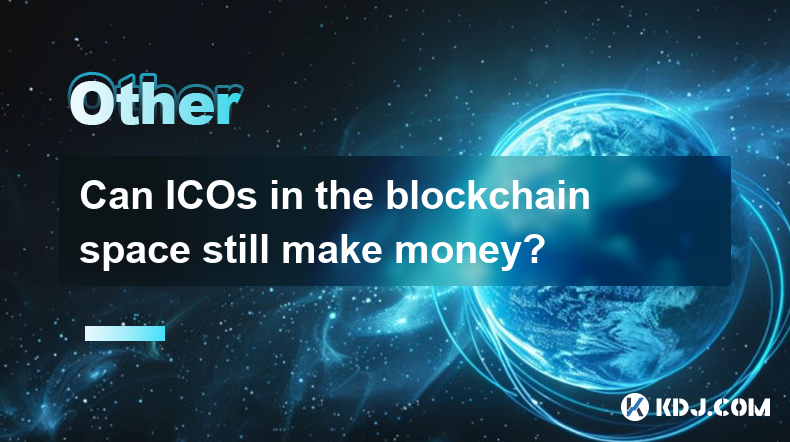
Can ICOs in the blockchain space still make money?
Apr 17,2025 at 08:29pm
The landscape of Initial Coin Offerings (ICOs) in the blockchain space has evolved significantly since their peak in 2017 and 2018. Despite the increased regulatory scrutiny and the rise of alternative fundraising methods like Security Token Offerings (STOs) and Initial Exchange Offerings (IEOs), ICOs can still be a viable way to raise funds and generat...

Can the application of blockchain in supply chain finance bring benefits?
Apr 15,2025 at 04:00pm
Can the application of blockchain in supply chain finance bring benefits? The integration of blockchain technology into supply chain finance has garnered significant attention in the cryptocurrency and financial sectors. This article explores how blockchain can potentially revolutionize supply chain finance, detailing its benefits and providing a compre...
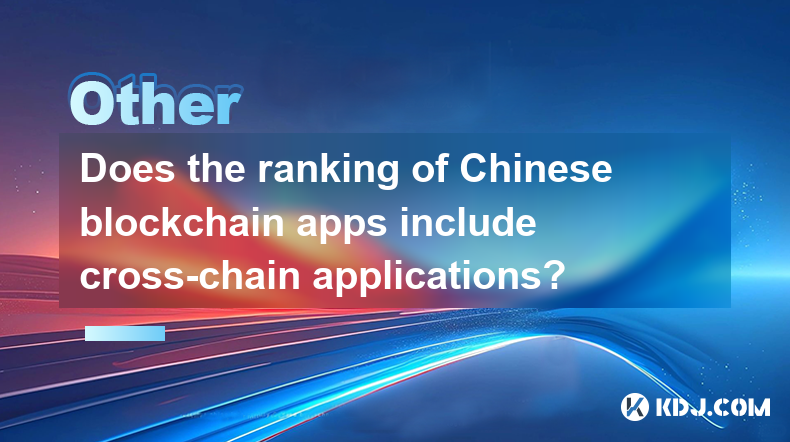
Does the ranking of Chinese blockchain apps include cross-chain applications?
Apr 14,2025 at 04:00pm
The ranking of Chinese blockchain apps is a comprehensive evaluation that takes into account various aspects such as user base, transaction volume, and technological innovation. A pertinent question arises regarding whether these rankings include cross-chain applications. Cross-chain applications, which allow different blockchain networks to interact an...
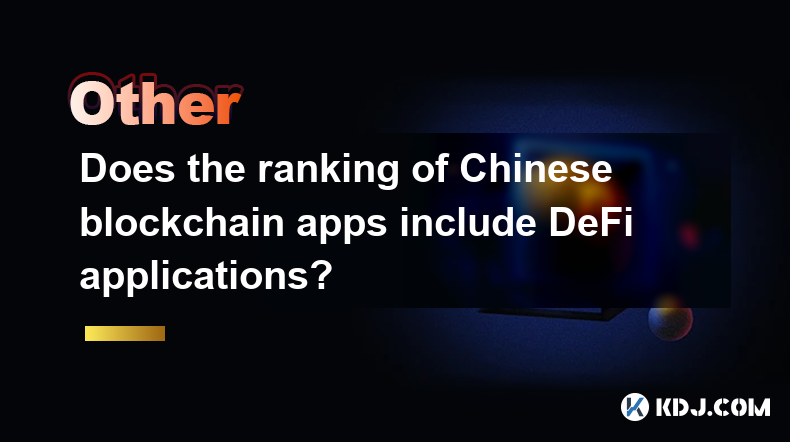
Does the ranking of Chinese blockchain apps include DeFi applications?
Apr 15,2025 at 06:57am
The ranking of Chinese blockchain apps is a comprehensive list that showcases the most popular and influential applications within the cryptocurrency ecosystem. One question that often arises is whether these rankings include DeFi applications. To answer this, we need to delve into the specifics of how these rankings are compiled and what types of appli...
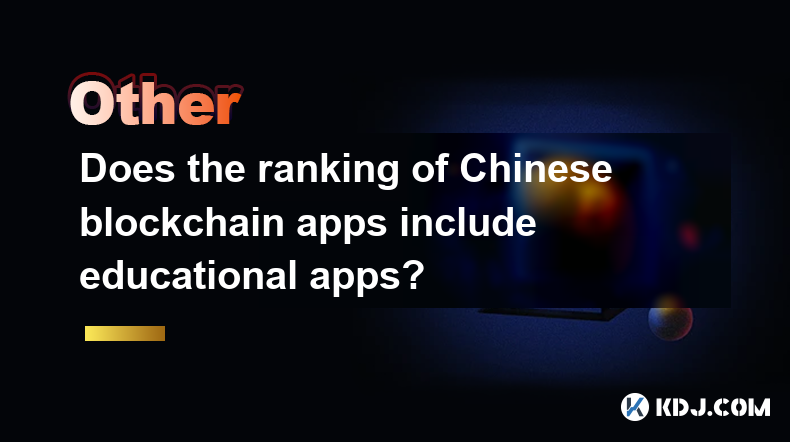
Does the ranking of Chinese blockchain apps include educational apps?
Apr 16,2025 at 03:35am
The ranking of Chinese blockchain apps often includes a variety of categories, from finance and gaming to social networking and beyond. One question that frequently arises is whether these rankings include educational apps. To address this, we need to delve into the specifics of how blockchain apps are categorized and ranked in China, and whether educat...
Does the ranking of Chinese blockchain apps include enterprise-level applications?
Apr 15,2025 at 06:42am
The ranking of Chinese blockchain apps often includes a variety of applications, ranging from consumer-focused to enterprise-level solutions. Understanding the scope and criteria for these rankings is essential to determine if enterprise-level applications are included. This article delves into the specifics of how Chinese blockchain app rankings are co...

Can ICOs in the blockchain space still make money?
Apr 17,2025 at 08:29pm
The landscape of Initial Coin Offerings (ICOs) in the blockchain space has evolved significantly since their peak in 2017 and 2018. Despite the increased regulatory scrutiny and the rise of alternative fundraising methods like Security Token Offerings (STOs) and Initial Exchange Offerings (IEOs), ICOs can still be a viable way to raise funds and generat...

Can the application of blockchain in supply chain finance bring benefits?
Apr 15,2025 at 04:00pm
Can the application of blockchain in supply chain finance bring benefits? The integration of blockchain technology into supply chain finance has garnered significant attention in the cryptocurrency and financial sectors. This article explores how blockchain can potentially revolutionize supply chain finance, detailing its benefits and providing a compre...

Does the ranking of Chinese blockchain apps include cross-chain applications?
Apr 14,2025 at 04:00pm
The ranking of Chinese blockchain apps is a comprehensive evaluation that takes into account various aspects such as user base, transaction volume, and technological innovation. A pertinent question arises regarding whether these rankings include cross-chain applications. Cross-chain applications, which allow different blockchain networks to interact an...

Does the ranking of Chinese blockchain apps include DeFi applications?
Apr 15,2025 at 06:57am
The ranking of Chinese blockchain apps is a comprehensive list that showcases the most popular and influential applications within the cryptocurrency ecosystem. One question that often arises is whether these rankings include DeFi applications. To answer this, we need to delve into the specifics of how these rankings are compiled and what types of appli...

Does the ranking of Chinese blockchain apps include educational apps?
Apr 16,2025 at 03:35am
The ranking of Chinese blockchain apps often includes a variety of categories, from finance and gaming to social networking and beyond. One question that frequently arises is whether these rankings include educational apps. To address this, we need to delve into the specifics of how blockchain apps are categorized and ranked in China, and whether educat...

Does the ranking of Chinese blockchain apps include enterprise-level applications?
Apr 15,2025 at 06:42am
The ranking of Chinese blockchain apps often includes a variety of applications, ranging from consumer-focused to enterprise-level solutions. Understanding the scope and criteria for these rankings is essential to determine if enterprise-level applications are included. This article delves into the specifics of how Chinese blockchain app rankings are co...
See all articles























































































